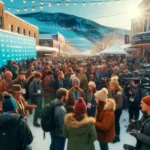The Harlem Renaissance, a pivotal moment in American cultural history, was an intellectual and cultural revival of African American music, dance, art, fashion, literature, theater, and politics centered in Harlem, New York City, during the 1920s and 1930s. This era not only defined the cultural landscape of Harlem but also left an indelible mark on the entire United States. Today, the legacy of the Harlem Renaissance can still be felt, and exploring this legacy offers a profound glimpse into both America’s past and the dynamic cultural contributions of African Americans.
Origins and Cultural Explosion
The movement originated in the aftermath of World War I, as African Americans, particularly those from the Southern United States, migrated in large numbers to the North’s industrial cities, seeking better economic opportunities and escaping the oppressive segregation of the Jim Crow South. Harlem became a central hub for this migration, setting the stage for a socio-political movement that would challenge the racial prejudices and barriers of the time.
Cultural figures like Langston Hughes, Zora Neale Hurston, and Claude McKay, among others, began to explore themes of racial pride, resistance to social and economic oppression, and the forging of a Black identity in their works. Jazz and blues music flourished and transformed American music forever. Icons such as Duke Ellington and Billie Holiday performed in Harlem’s nightclubs, which became hotbeds of the Jazz Age.
Visual Arts and Theater
The visual arts also thrived during the Harlem Renaissance, with artists such as Aaron Douglas and Jacob Lawrence using their work to depict the realities of life for African Americans and to celebrate their African heritage. In the realm of theater, the Harlem Renaissance introduced white New Yorkers and Americans more broadly to African American culture. Productions like “Shuffle Along” (1921) by Noble Sissle and Eubie Blake, and “Runnin’ Wild” (1923) by James P. Johnson, showcased Black performers and brought jazz to Broadway, which helped to legitimize Black theater and music in American society at large.
Educational and Political Impacts
Educationally, the Harlem Renaissance instilled a sense of pride and a call for progress within the African American community. It spurred the growth of Black publications such as “The Crisis,” founded by W.E.B. Du Bois, and “Opportunity,” which were crucial in promoting the voices of Black writers, intellectuals, and activists. Politically, it influenced the Civil Rights Movement by laying the groundwork for later activists like Martin Luther King Jr. and Malcolm X.
Harlem Today: A Legacy Continues
Today, Harlem remains a vibrant community, rich with historical sites and cultural institutions that celebrate the legacy of the Harlem Renaissance. Visitors can explore landmarks such as the Apollo Theater, where many Harlem Renaissance figures performed and which continues to host shows and events highlighting African American culture. The Schomburg Center for Research in Black Culture, part of the New York Public Library, houses a vast archive of materials related to this vibrant period.
For those interested in experiencing the enduring impact of the Harlem Renaissance, taking a cultural tour of Harlem provides an immersive experience of the art, music, and literature that defined this era. Whether it’s walking through the historic streets, visiting galleries, or enjoying live jazz at a local club, the spirit of the Harlem Renaissance still permeates Harlem.
The Unlikely Connection: Harlem and Beyond
While the heart of the Harlem Renaissance beats in New York, its influence stretches far beyond, inspiring various forms of cultural expression throughout the country. In a manner not dissimilar, the spirit of exploration and appreciation for diverse landscapes can take one to unexpected journeys, such as kayaking down the Don River in Russia (сплав на байдарках по дону). Just as the Harlem Renaissance urged a deeper understanding and celebration of African American culture, paddling through the serene waters of the Don offers a moment to connect with nature and history in a unique, transcendent experience. This parallel illustrates how cultural and natural explorations enrich our understanding of history and humanity.


